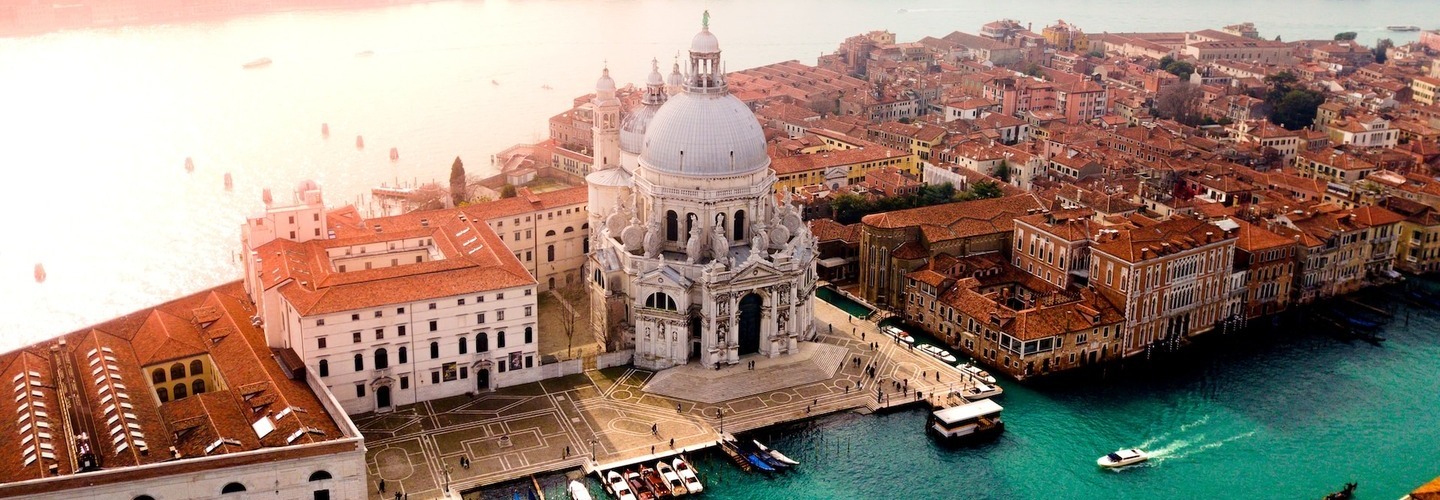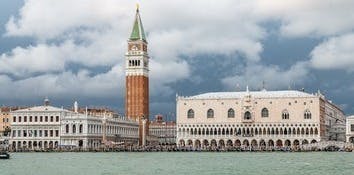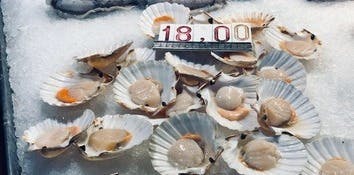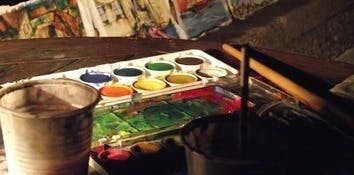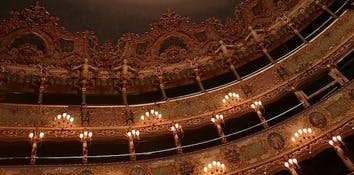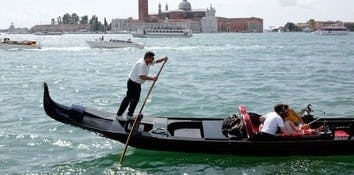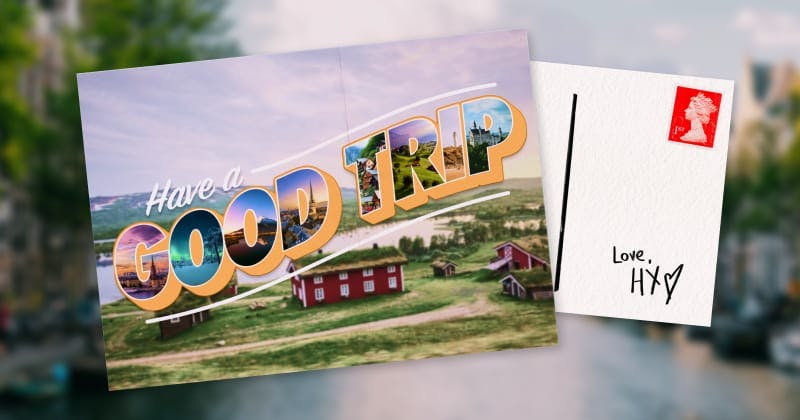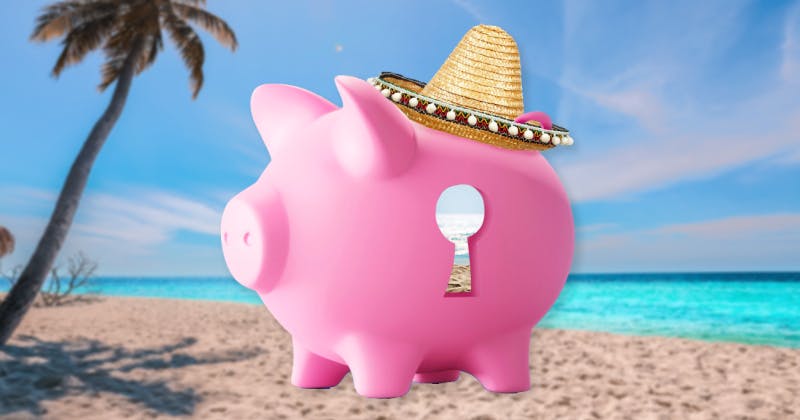
Venice Travel Guide
Hello and welcome to our Venice Travel Guide. We're here to help you travel better in this beautiful city.
What you'll find in this guide:
Top things to do in Venice
Practical information
Getting to Venice
Getting around Venice
Top attractions in Venice
Where to eat in Venice
Top tips for your Venice trip
You can find more great video content on our YouTube channel
Holiday Extras Travel Guides
GMT +1
Euro EUR
Italian
Type C, F and L
2 hour 15
Facts about Venice
Venice is like no city on Earth. Rising from the sea and running on a series of canals, it's easy to see why many refer to it as the city of water. In fact, the city is actually sinking into the Venetian Lagoon right now. Aside from being easy on the eyes, there's no shortage of things to do in Venice, with a wealth of culture, history and copious amounts of delicious food to enjoy.
However, in the summer months the small city can get very busy as over 50,000 tourists flock there every day. If you're unprepared it's easy to miss some of the hidden gems that this unique place has to offer, such as where to find the best authentic Venetian cuisine, how avoid the long queues in the Piazza San Marco and where to find the all important free wifi.
Practical Info
Culture and etiquette
Religion
The majority of Venice is Roman Catholic – there's also large Orthodox and Muslim communities.
Tipping
Do you need tip in Italy? Two thirds of Italians don't tip when they dine out, so don't feel pressured to. Sometimes the service is included in your bill but if not, and you've enjoyed your experience, round up the bill a bit.
Smoking
Smoking is banned in enclosed public spaces like bars, restaurants and public transport.
Language 101
Whenever travelling to a new, foreign-speaking country, it's always a worry that your English might not be understood. After all, no one wants to attempt to order squid ink risotto only to be greeted by a plate of chicken nuggets and a look of contempt from the waiter...
With that said, do you need to be able to speak Italian to enjoy your Venetian holiday?
Good news! English is spoken and understood across Venice, especially at tourist sites. To survive here you don't need to learn Italian, but it certainly helps and the effort will be appreciated by locals. Here are some basic phrases that we found useful and will let you show off your multilingual skills:
Handy phrases:
- Hello: Ciao (informal) or Buongiorno (formal)
- Goodbye: Ciao (informal) or Arrivederci (formal)
- Yes: Si
- No: No
- Please: Per favore (formal) or Per piacere (informal)
- Thank you: Grazie
- My name is: Mi chiamo
- I don't understand: Non ho capito
- Do you speak English? Parla Inglese?
- May I have the bill please? Il conto, per favore?
Jabs, visas and other advice
For up-to-date advice on jabs, visas and other foreign advice, we recommend following the government's website.
Emergency numbers
For ambulance services call 118, for police call 112 or 113 and for fire services it's 115.
Getting to Venice
Venice is 697 miles from London, with flights taking approximately 2 hours. Just enough time to practice some Italian phrases. Ciao bello.
There are two airports serving Venice. Most flights will be directed to the larger Marco Polo Airport, which is a mere five miles outside the city. If you're flying with Ryanair from Stansted, East Midlands or Leeds Bradford Airports, you may arrive at Treviso Airport, which is roughly 25 miles out of the city.
We definitely recommend flying into Marco Polo Airport if possible, as the city centre is just a stone's throw away and you'll get the best views of Venice from above.
Getting from the airport to Venice
The ATVO Express Venice costs €15 (£13.30) for a return ticket and transfers take around 20 minutes. Tickets are available from the public transport booth in the arrivals hall, but we recommend booking online before you go.
Taxi transfer from Marco Polo Airport to Venice
If speed is the name of the game, then nothing will get you into the city faster than a local taxi. As with all taxis, this is a premium method of transport, costing around €40 (£35.50), but like the bus can be booked online for maximum convenience.
Both buses and taxis take you over the bridge from the mainland to Piazzale Roma, which is as far as cars can go into Venice. If you're staying in the city then you'll need to sort your own way to your hotel so it's either a walk, the water bus or a private water taxi.
Boat transfer from Marco Polo Airport to Venice
Of course, the real way to get into Venice from Marco Polo Airport is by boat. You can either take a private water taxi or catch the water bus – the vaporetto.
The vaporetto is run by Alilaguna and takes you right into the heart of Venice, stopping at Fondamente Nove, Lido, San Marco, Rialto and Guglie. A single costs €15 (£13.30) and a return €27 (£24). You can include an airport transfer with an unlimited vaporetto travel card for an extra €6 (£5.33) each way. If you're planning to use the vaporetto a lot in Venice, then this is the best way to get your airport transfer ticket.
Bus transfer from Treviso Airport to Venice
If you're on a Ryanair flight to Treviso Airport the best way to transfer is by bus. The ATVO service takes 70 mins to Piazzale Roma, costing roughly €12 (£10.66) for a single and €22 (£19.50) for a return.
Or, the Barzi bus costs the same and takes around 40 mins to reach Venice. The downside is this bus stops at Tronchetto, which is further out and a much less convenient drop-off location.
Getting around Venice
Phew, you've arrived! Time to start exploring and getting around Venice.
You're probably wondering about the public transport in Venice. Normally this would be where we talk about your options of taxi, bus, subway and such, but you won't find such talk when it comes to Venice! As the city is essentially standing on stilts, there are no roads, no cars, no buses and certainly no subways (the salt water tends to turn them pretty rusty). No, you're best getting around Venice by foot or by water.
Should I travel through Venice on foot?
As with all cities, but especially when it comes to Venice, we believe the best way to explore is to walk. The city centre is fairly compact, with a walk from Piazza San Marco to the Rialto Bridge only taking about 10 minutes.
To add to this, we think walking is the absolute best way to get lost in Venice's myriad of side streets and alleys. Trust us, getting lost is the only way to truly discover all the hidden restaurants, bars, shops, workshops and boutiques. Planning is great, but the best moments are often unscripted.
Should I travel through Venice by boat?
Although walking gives the most intimate experience of the city, unfortunately most of us don't have the time to wander through every meandering Venetian street. If time's a factor, nothing gets you around the city faster than the vaporetto which is the city's water bus.
The vaporetto operates just like a bus in any other city, with multiple routes and regular stops but there are a few things you should know about the water bus before jumping on:
- Let people disembark before boarding.
- Validate your ticket before you board the vaporetto, or your could be fined. Non bene.
The variety of different tickets available for the vaporetto can be a little daunting. Fortunately, we found out that you can ignore most of the options as they're designed for locals, leaving you with the tickets for tourists. Here are some of the most popular tickets we saw:
- Single journeys are €5 (£4.44) and returns €10 (£8.88).
- An unlimited number of journeys for 75 minutes will cost you €7.50 (£6.66).
- 1, 2, 3 and 7-day unlimited travel passes are available. If you plan on using the vaporetto a lot, then we think that picking up one of these is the best value for money.
- Those of you aged 6 to 29 can buy a Rolling Venice card for €6 (£5.33). This entitles you to a €22 (£19.50) 72-hour unlimited travel ticket.
- As mentioned above, you can upgrade your daily passes to include an airport transfer, costing €6 (£5.33) for one-way and €12 (£10.66) for a return.
- Tickets are available from machines at vaporetto stops or from ticket offices spread around the city.

Italy ranks 32nd on the Good Trip Index
This score is calculated based on Sustainability, Human Rights, Women's Rights, Press Freedom, Quality of Life, LGBTQI+ Rights and Animal welfare
Find out moreTop attractions in Venice
Venice isn't short of activities and there's a wide variety of experiences for you to enjoy. Whether you're keen to immerse yourself in the history of Venice or would enjoy fine dining in one of many restaurants – Venice quite simply has something for everyone.
From a visit to Doge's Palace, to a romantic Gondola ride, make the most of your next trip and pre-book top things to do in Venice for you and your family before you fly.
Where to eat in Venice
Many people holiday in Italy simply for the promise of the nation's fantastic food and captivating cuisine. This is with good reason, as images of pizza, pasta, lasagne and garlic bread have this humble writer salivating and wishing for lunchtime.
Yet with so much choice and variation amongst different local dishes, it can be tricky to know exactly where and what to eat.
During our time in Venice, we learned a lot about some of the culinary delights the city has to offer. Let's dive fork first into what we found out following our nose around Venice.
Is Venetian food different to classic Italian?
Surprisingly yes! Traditional Venetian food is different from most of the food you'll find elsewhere in Italy. There's a much heavier emphasis on seafood, with dishes commonly including sardines, anchovies, crab and even squid ink.
Trust us when we say you haven't tried antipasto until you've tried fish antipasto. Baccala mantecato is our favourite variety. It's made by poaching and blending the fish into a smooth mousse and seasoning with olive oil, salt and pepper. It is then served spread on slices of fresh bread or grilled white polenta, a typical staple of the Veneto region.
Where are the best places to eat in Venice?
To find the most authentic Venetian experience, try to eat outside of the major tourist areas for the best food in Venice.
If you're looking to impress and perhaps splash the cash, then you can't do much better than Alle Testiere, near Santa Maria Formosa. Expect the freshest catches from the local fish market and staff with a passion for Italian wine. Seating only 22 people (and only having two sittings a day), booking is an absolute must if you want to enjoy this intimate setting. Also, keep in mind that although a meal at Alle Testiere is worth every penny, you won't see much change from €60 per person.
Where to eat on a budget in Venice?
An Italian holiday can certainly be tough on the wallet, so it's worth knowing where you can find good food cheap.
We were big fans of Dai Tosi, which you can reach easily from the vaporetto stop at Giardini to the west of the city. Offering classic pizzas, as well as traditional Venetian and pasta dishes, you're sure to satisfy all tastes, no matter how fussy. Pizzas start from as little as €5, with other dishes not costing much more. I think that calls for seconds.
Where not to eat in Venice
Be wary when looking for some grub in and around Piazza San Marco, as you may be getting ripped off.
Many restaurants in these tourist traps will sell you overpriced Italian food that's no better than what you can find in your freezer. We know they say even the worst pizza is still pretty good, but when you're in a city of so much variety to make your palette tingle, why would you settle for less?
Keep an eye out for restaurants that are already full of tourists, with multi-language menus and waiters standing outside, trying to tempt you in. These would be places to be cautious of if you're looking for fairly priced, authentically Venetian eating.
TopTips for your Venice trip
It's no secret that the city is one of the most popular tourist destinations in the world and the busy crowds could have a negative impact on your time here. We learned a lot during our stay, so here are our tips to help make your Venice holiday better.
Avoid busy periods
Venice is busiest during the summer months, when everyone comes to soak up the Mediterranean sun. But we've found the city much more enjoyable in late spring or early autumn, when the weather is still pleasant and the lack of people traffic is pure bliss.
Stay in the city
Venice is best first thing in the morning and during the evening, when the cruise ships aren't running and the streets are at their quietest. To prevent missing out on these times (or to save you from a 5am wake up) we think it's best to stay within the city itself. There's accommodation to suit every taste and budget, but we recommend the Hotel Caprera for affordable, excellently located lodgings.
A gondola ride is a must
Because how can you visit Venice and not take a gondola ride?
However, knowing how much a gondola ride should cost is easier said than done. The city of Venice actually sets the official rate of gondola rides, which start at around €80 for 30 minutes, with additional 20 minute slots costing €40. Expect these fares to rise even higher after 7pm.
It's worth knowing that although these prices are set by the city, they are rarely adhered to. For example, a singing gondolier can cost a premium, so it's worth discussing the cost and length of your ride with the gondolier before you've stumbled into the boat.
You can find gondolas throughout the main tourist spots, so catching a ride shouldn't be too difficult. Piazzale Roma, the Rialto Bridge Area and Doge's Palace are all top areas to find a gondolier just waiting to let you aboard. If you're travelling to Venice as a group, it's also worth remembering that gondolas can seat up to six people.
Avoid food from the tourist traps
A coffee in Piazza San Marco can set you back €5. If cash is more important to you than the view, food and drink gets cheaper away from the tourist centres. You never know, you might find a more authentic brew for a fraction of the cost.
You can't take your bag into the Basilica
During the peak summer months, queues for Venice's main attractions can be incredibly long, but one destination that's absolutely worth waiting in line for is Saint Mark's Basilica in the Piazza San Marco. Arguably the most famous church in the city, it's stunning opulence is breathtaking and certainly one of the top things to do in Venice.
But it's worth bearing in mind that they don't allow any bags in the building. We saw some unfortunate tourists queue for half an hour, only to be told to join another queue to put their bag in the cloakroom, where they were told to rejoin the back of the first queue.
Learn from these mistakes and make sure you deposit your bag in the cloakroom first to avoid queueing twice. There's so much to experience in Venice – don't spend all your time in line!
To really avoid the queues, book ahead
Much like the Basilica, you can expect long queues throughout the city during busy periods. However, the longest queues are normally for the ticket offices, so to travel better, book ahead to skip these.
Make the most of free loos
There aren't many public toilets in Venice and they often have queues to rival the Basilica. And you have to fork out €1.50 for the convenience.
If you're able to, make use of the free loos found in hotels and restaurants. Just remember – signori for men and signore for women.
It can flood (and smell)
Sadly both come part and parcel with a city in a lagoon. We've noticed the smell in Venice is at its most pungent during the hottest periods, so if you needed another reason to avoid the peak summer months, this is it.
Locally known as Acqua Alta, flooding normally occurs during high tide and can make the Venetian alleys feel more like the streets of Atlantis. Normally occurring during winter months, the flooding is usually quite minor (an odd puddle or overflowing drain) and won't be much more than a nuisance to your Venice holiday. However, if you hear a siren, it means a higher than usual tide is approaching, during which time the city will place elevated wooden walkways in areas most susceptible to flooding.
Expect to get lost
It can feel like there's no logic to Venice's address system, as all of the buildings are numbered sequentially, not by street, but across the whole city from 1 to over 15000. Unless your orienteering skills are almost superhuman, you can expect to find yourself walking to a dead end or being cut off by a canal. The important thing is to not panic, but rather give yourself time to get around and amble through this enchanting city. After all, getting lost is part of the experience.
Top






